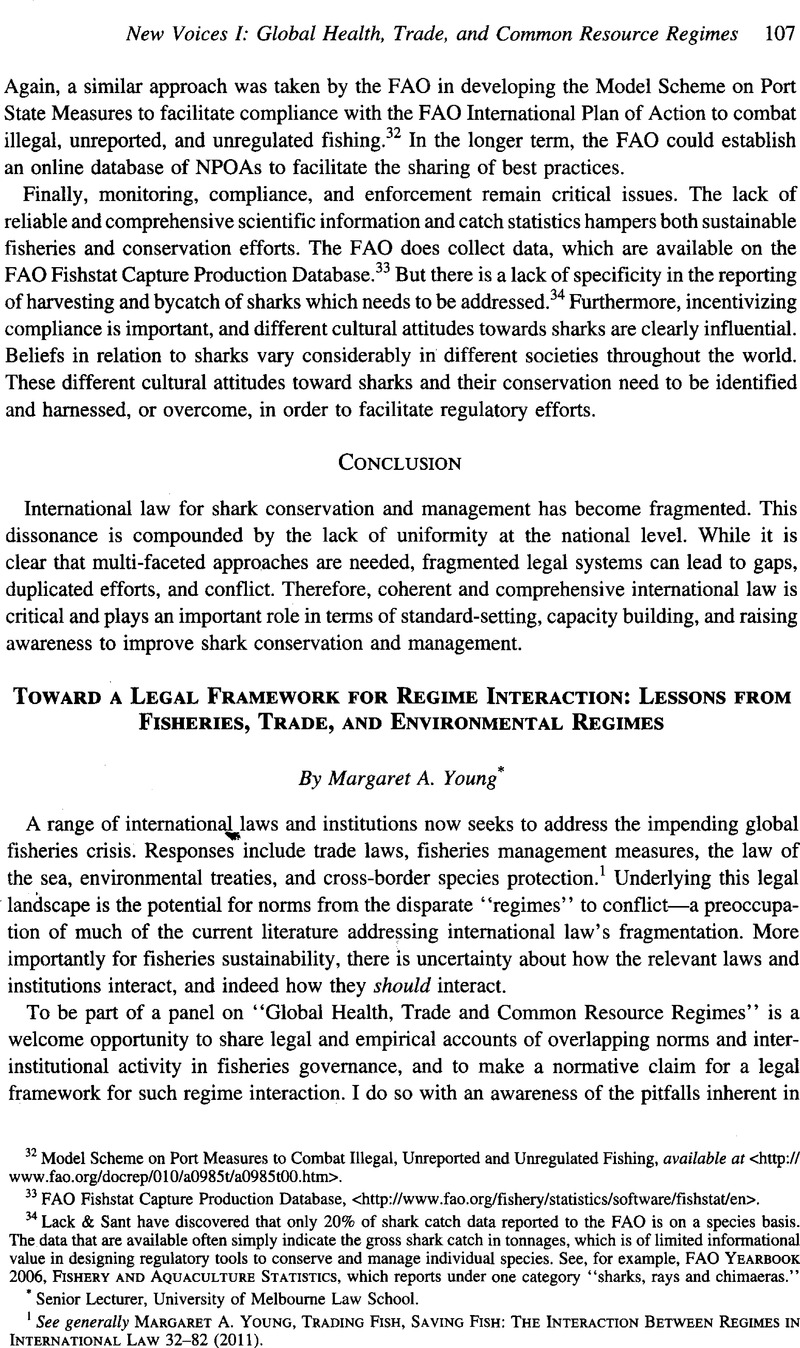No CrossRef data available.
Published online by Cambridge University Press: 28 February 2017

1 See generally Young, Margaret A., Trading Fish, Saving Fish: The Interaction Between Regimes in International Law 32–82 (2011)CrossRefGoogle Scholar.
2 Rep. of the Int’l Law Comm’n, 58th sess, 1 May-9 June, 3 July-11 Aug., 2006, 65-101, U.N. Doc. A/CN.4/ L.682 (2006).
3 Krasner, Stephen, Structural Causes and Regime Consequences: Regimes as Intervening Variables, in International Regimes 1, 3 (Krasner, Stephen ed., 1983)Google Scholar, as well as recent literature on “regime complexes” in, e.g., Keohane, Robert O. & Victor, David G., The Regime Complex for Climate Change, 9 PERSP. On Pol. 7 (2011)CrossRefGoogle Scholar.
4 See Young, Margaret A., Introduction: The Productive Friction Between Regimes, in Regime Interaction in International Law: Facing Fragmentation (Young, Margaret A. ed., forthcoming 2011)CrossRefGoogle Scholar, and associated chapters, especially Crawford, James & Nevili, Penelope, Relations Between International Courts and Tribunals: The “Regime Problem”; Dunoff, Jeffrey, A New Approach to Regime Interaction; Lang, Andrew, Legal Regimes and Professional Knowledges: The Internal Politics of Regime Definition; and Koskenniemi, Martti, Hegemonic Regimes CrossRefGoogle Scholar. See also Koskenniemi, Martti, The Fate of Public International Law: Between Technique and Politics, 70 Mod. L. Rev. 1 (2007)CrossRefGoogle Scholar.
5 Young, supra note 1, at 113-24.
6 Id. at 134-54.
7 Id. at 267-71.
8 ld. at 278-84.
9 Koskenniemi, The Fate of Public International Law, supra note 4.
10 Young, supra note 1, at 278-84.